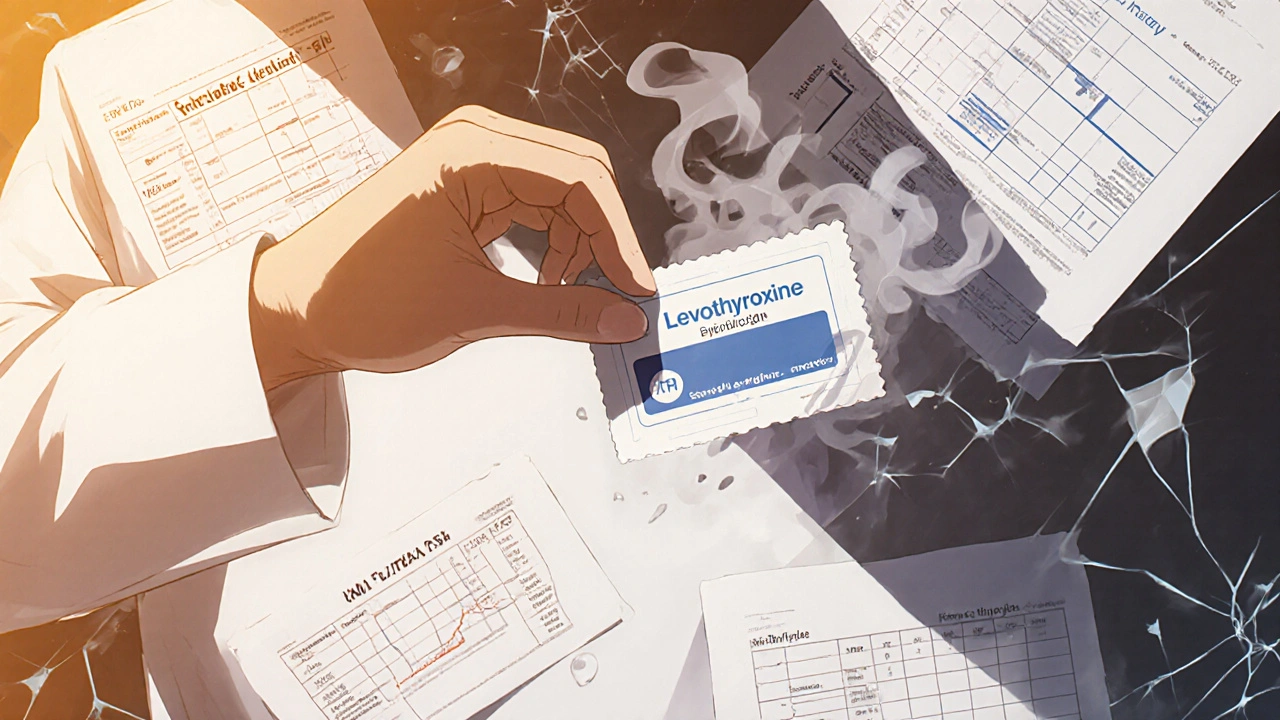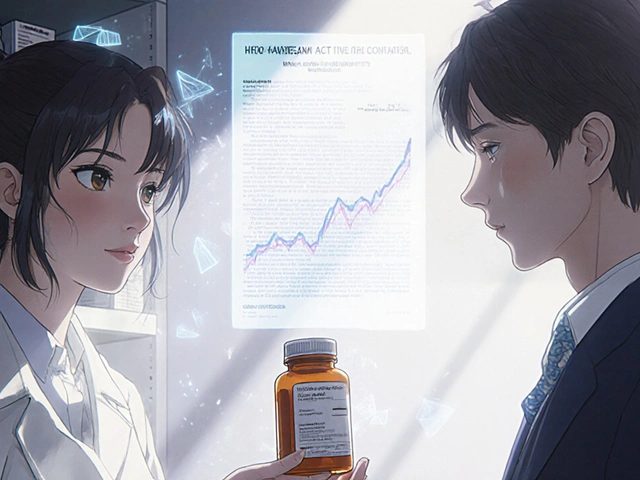When a medication has a NTI drug designation, it means there’s almost no room for error. A tiny change in dose - even 10% - can push you from being effectively treated to facing life-threatening side effects. These aren’t just any pills. They’re drugs where the line between healing and harm is razor-thin. If you’re taking one of these, you’re not just following a prescription. You’re managing a tightrope walk every day.
What Exactly Makes a Drug an NTI Drug?
NTI stands for Narrow Therapeutic Index. That means the difference between a dose that works and a dose that’s toxic is very small. The U.S. Food and Drug Administration (FDA) defines it clearly: small changes in blood levels can cause serious problems - from organ damage to death. For most drugs, your body can handle a bit more or less. Not with NTI drugs. Their therapeutic range is often measured in single-digit nanograms per milliliter. Take digoxin, for example. The safe, effective range is 0.5 to 2.0 ng/mL. Go above 2.0? You risk fatal heart rhythms. Drop below 0.5? Your heart failure won’t improve.
This isn’t theoretical. Studies show that 30% of all dosing-related adverse events come from just 15% of medications - the NTI ones. That’s why doctors and pharmacists treat them differently. They don’t just hand out refills. They monitor. They test. They adjust. And in many states, pharmacies can’t automatically switch you from brand to generic without your doctor’s explicit OK.
The Core NTI Drug List: What You’re Likely to Encounter
While the FDA doesn’t publish one official list, multiple authoritative sources - state pharmacy boards, clinical guidelines, and hospital protocols - agree on the most common NTI drugs. Here are the ones you’re most likely to see in practice:
- Warfarin - The classic anticoagulant. Its target INR is 2.0-3.0 for most conditions. A single INR above 4.0 increases major bleeding risk by more than seven times. Even small changes in diet, antibiotics, or supplements can throw it off.
- Digoxin - Used for heart failure and atrial fibrillation. Its narrow window (0.5-2.0 ng/mL) makes it a frequent culprit in hospital poisonings. Older adults are especially vulnerable because kidney function declines with age, slowing clearance.
- Lithium - A mood stabilizer for bipolar disorder. The therapeutic range is 0.6-1.2 mmol/L. At 1.5 mmol/L, you start getting tremors, confusion, and vomiting. At 2.0+, seizures and kidney damage become likely. Regular blood tests every 3-6 months aren’t optional - they’re life-saving.
- Phenytoin - An older but still widely used seizure medication. Its range is 10-20 mcg/mL. Too low? Seizures return. Too high? You get nystagmus (jerky eye movements), slurred speech, and even coma. Its metabolism is highly variable between people, making dosing unpredictable without testing.
- Tacrolimus - A transplant drug. After organ surgery, levels must be kept between 5-15 ng/mL. Even minor drops can trigger rejection. Even small spikes can damage kidneys. Patients get blood draws 3 times a week in the early weeks after transplant.
- Carbamazepine - Used for epilepsy and nerve pain. Therapeutic range: 4-12 mcg/mL. It interacts with dozens of other drugs, including antibiotics and grapefruit juice, which can cause dangerous spikes.
- Valproic Acid - Another seizure drug, also used for migraines and bipolar disorder. Range: 50-100 mcg/mL. Liver toxicity and pancreatitis are real risks if levels creep too high.
- Levothyroxine - The most prescribed drug in the U.S. for hypothyroidism. While it’s often seen as "safe," even small changes in brand or formulation can shift TSH levels dramatically. One Reddit user reported their TSH jumping from 1.2 to 8.7 after switching generics - a change that took three months to fix.
Why Generic Substitutions Can Be Risky
You might assume all versions of a drug are the same. With NTI drugs, that’s not true. The FDA requires stricter bioequivalence standards for generics of NTI drugs: their blood levels (AUC and Cmax) must fall within 90-111% of the brand-name version. For regular drugs, the range is 80-125%. That tighter window exists because even a 10% difference in absorption can push levels out of the safe range.
That’s why 47 U.S. states have laws restricting automatic substitution of NTI drugs. In North Carolina, for example, pharmacists can’t switch your levothyroxine or lithium without the prescriber writing "dispense as written" on the prescription. In Oklahoma, the list expanded in 2025 to include nortriptyline and esketamine - drugs once considered outside the NTI category but now recognized as having unpredictable blood level responses.
Pharmacists report that 73% have intervened to prevent a dosing error involving an NTI drug in the past year. That’s not a small number. It’s a system working - but barely.

Monitoring Isn’t Optional - It’s the Standard of Care
If you’re on an NTI drug, you’re not just taking a pill. You’re part of a monitoring system. Blood tests aren’t just routine - they’re your safety net.
- Warfarin: INR checked every 3-5 days after starting, then weekly until stable.
- Lithium: Serum levels every 3-6 months, more often if you’re elderly or have kidney issues.
- Tacrolimus: Trough levels drawn 3 times a week in the first month after transplant.
- Phenytoin: Trough levels checked every 2-4 weeks initially, then monthly.
- Aminoglycosides (like gentamicin): Peak and trough levels required with each dose cycle.
These aren’t suggestions. They’re backed by guidelines from the American Heart Association, American Society of Transplantation, and others. Skipping a test isn’t just negligence - it’s dangerous. One JAMA study found that 32% of lithium patients miss monitoring appointments. That’s a quarter of people at risk for toxicity without even knowing it.
Emerging NTI Drugs: The New Frontier
The list isn’t static. As precision medicine grows, more drugs are falling into the NTI category - especially in oncology.
- Axitinib - Used for kidney cancer. Target blood level: 15-30 ng/mL.
- Ponatinib - For resistant leukemia. Therapeutic range: 20-50 ng/mL.
- Olaparib - A PARP inhibitor for ovarian and breast cancer. Target AUC: 30-60 mcg*h/mL.
These drugs are designed to target cancer cells with extreme precision - but that precision means they’re unforgiving. A slight drop in level and the tumor grows. A slight increase and your liver fails. The FDA is now considering expanding NTI designations to newer anticoagulants like apixaban and rivaroxaban, even though they’re often called "safer" than warfarin. The Institute for Safe Medication Practices argues that bleeding risks still make them NTI-level concerns.

What You Need to Do If You’re on an NTI Drug
Don’t panic. But do be proactive.
- Know your drug’s therapeutic range. Ask your doctor or pharmacist. Write it down.
- Never switch brands or generics without talking to your prescriber. Even if the pharmacy says it’s "the same," it might not be for your body.
- Keep all blood test appointments. Set phone reminders. Don’t skip them because you feel fine. Levels can change without symptoms.
- Tell every provider you see about your NTI drugs. Even if it’s for a cold or a rash - many antibiotics and supplements interfere with NTI drugs.
- Use one pharmacy for all your prescriptions. This helps them track interactions and catch errors before they happen.
There’s no magic trick. Managing an NTI drug is about consistency, communication, and vigilance. But done right, it works. People live long, healthy lives on lithium, warfarin, and tacrolimus every day. The key isn’t avoiding the drug - it’s mastering the process around it.
Why This Matters Beyond the Prescription Bottle
NTI drugs aren’t just a clinical footnote. They’re a mirror to our healthcare system’s strengths and flaws. On one hand, we have the science to measure blood levels down to the nanogram. We have AI tools that predict dosing errors before they happen. On the other, we still have patients skipping tests because they can’t afford them, or pharmacies switching generics because of insurance rules.
The global NTI drug market is projected to hit $72 billion by 2028. That’s not just profit - it’s the cost of precision medicine. And it’s growing because we’re getting better at targeting disease. But better targeting means less room for error. That’s the trade-off.
If you’re on one of these drugs, you’re not just a patient. You’re part of a high-stakes system that demands your attention. And that’s okay - as long as you’re informed, involved, and never afraid to ask: "Is this safe for me?"
What does NTI mean in medication?
NTI stands for Narrow Therapeutic Index. It means the difference between a dose that works and a dose that’s toxic is very small. Even minor changes in blood levels can cause serious side effects or treatment failure. Drugs like warfarin, lithium, and digoxin are classic examples.
Is warfarin an NTI drug?
Yes, warfarin is a well-known NTI drug. Its therapeutic range is an INR of 2.0-3.0 for most conditions. An INR above 4.0 greatly increases the risk of dangerous bleeding, while an INR below 2.0 may not prevent clots. Small changes in diet, other medications, or even supplements can affect its levels, requiring frequent monitoring.
Can you switch generic versions of NTI drugs?
It’s not recommended without your doctor’s approval. The FDA requires stricter bioequivalence standards for NTI generics, but even small differences in absorption can push blood levels out of the safe range. Many states require the prescriber to write "dispense as written" to prevent automatic substitution. Always check with your pharmacist before switching.
Why do NTI drugs need blood tests?
Because their effectiveness and safety depend on precise blood concentrations. For example, lithium’s therapeutic range is only 0.6-1.2 mmol/L - a 0.3 point increase can cause toxicity. Blood tests let doctors adjust doses before symptoms appear. Skipping tests risks serious harm.
Are there any new NTI drugs being added to the list?
Yes. Many newer cancer drugs, like axitinib, ponatinib, and olaparib, have narrow therapeutic windows and are now classified as NTI. The FDA is also reviewing anticoagulants like apixaban and rivaroxaban for NTI status due to bleeding risks at higher doses. The list is evolving as precision medicine grows.
What happens if I miss a blood test for my NTI drug?
You could be at risk of toxicity or treatment failure without knowing it. For example, lithium levels can rise slowly over weeks due to dehydration or kidney changes, leading to confusion, tremors, or seizures. Warfarin levels can become too high after starting a new antibiotic. Missing a test means you’re flying blind. Always reschedule as soon as possible and tell your doctor you missed it.






Reviews
It's wild how something so simple-a pill-can be a minefield. I used to think meds were meds, but now I see it's more like playing chess with your own biology. One wrong move and everything collapses.
In India, we don’t have this luxury. Many people take generics without tests. I know someone on lithium who missed her blood work for 8 months. She’s fine now, but it scared me. This post is a wake-up call.
As a pharmacist, I’ve seen the chaos. A patient switched levothyroxine brands and ended up in the ER with atrial fibrillation. No symptoms before. Just a 7% difference in absorption. It’s not paranoia-it’s physics.
PLEASE, if you're on an NTI drug-DON'T-EVER-SWITCH-GENERICS-WITHOUT-TALKING-TO-YOUR-DOCTOR-AND-YOUR-PHARMACIST-AND-WRITE-IT-DOWN-AND-SET-REMEMBERS-AND-TALK-TO-EVERY-ONE-OF-YOUR-DOCTORS-AND-DON’T-SKIP-BLOOD-TESTS-EVER-AGAIN-PLEASE-
I was on tacrolimus after my kidney transplant. They drew my blood three times a week for the first month. I thought I was being over-treated. Then I saw what happened to the guy in the next bed-he got rejected because his level dropped 0.5 ng/mL. That’s not medicine. That’s survival.
so i just switched from brand to generic warfarin and my inr went from 2.3 to 3.8 in 4 days. i didnt even know it was a thing. now im on the brand again and my doc says i was lucky i didnt bleed out
This is a critical conversation that needs to be had in every primary care clinic. Precision medicine is not a buzzword-it’s a responsibility. Patients deserve clarity, consistency, and protection from systemic shortcuts. Thank you for laying this out with such care.
People who skip blood tests are just asking to die. It’s not complicated. You don’t get to be lazy when your life depends on a number. If you can’t be responsible, don’t take the drug. Simple.
Of course the FDA doesn’t publish an official list… because they’re in bed with Big Pharma. 🤫 The real NTI drugs? The ones that make the most money. Warfarin? Cheap. Tacrolimus? $12,000 a year. Coincidence? I think not. 💸🧠
Wow. Another post about how drugs are dangerous. Shocking. I bet if you told people to drink water, they’d die from overhydration too. This is just fearmongering dressed as education.
I’ve been on carbamazepine for 17 years and I’ve never had a blood test. I don’t need them. I feel fine. I don’t trust doctors. I trust my body. And my body says I’m fine. All these numbers? Just numbers. People used to live without them. Why can’t we?
in my village in india we use generic lithium and no one checks levels but still people are fine i think maybe our bodies adapt or maybe the drugs are different here
NTI drugs are a government tool to control the population. Blood tests = tracking. Monitoring = surveillance. They want you dependent. Don’t let them win. 🚫💉
It is my profound conviction that the dissemination of accurate, evidence-based information regarding narrow therapeutic index pharmaceuticals constitutes a non-negotiable imperative in the contemporary medical landscape. The ethical obligation to ensure patient safety through rigorous pharmacokinetic oversight cannot be overstated. I commend the author for the lucidity and precision of this exposition.